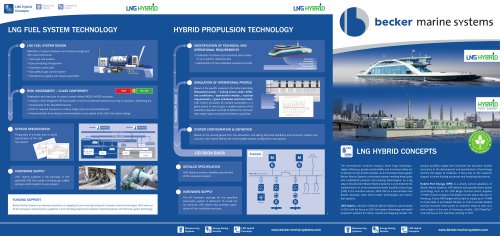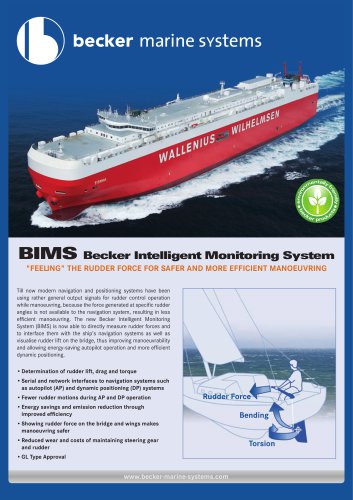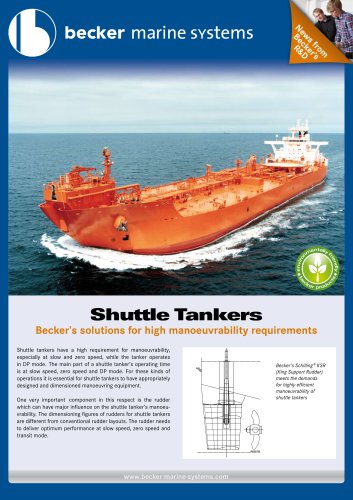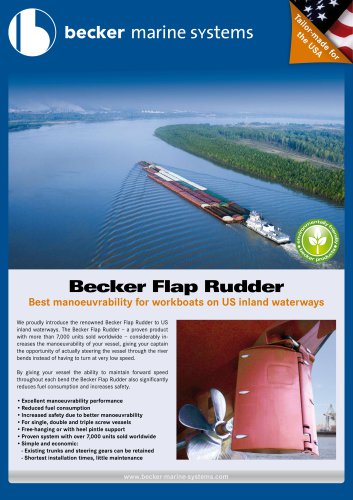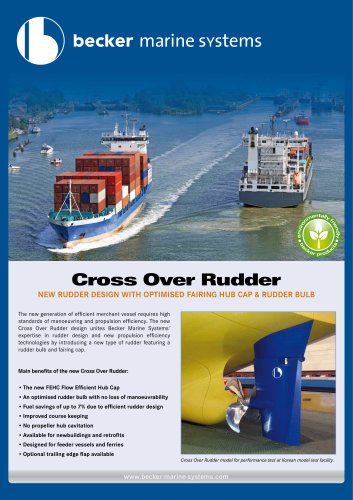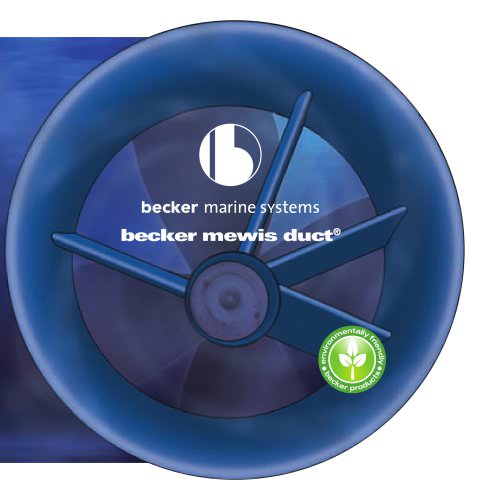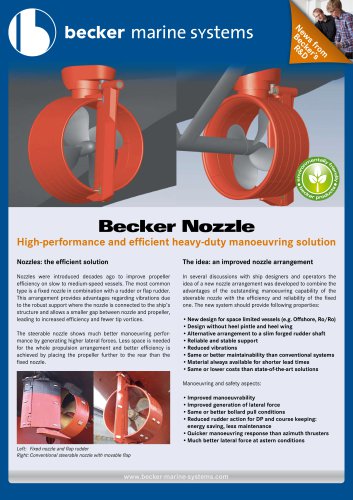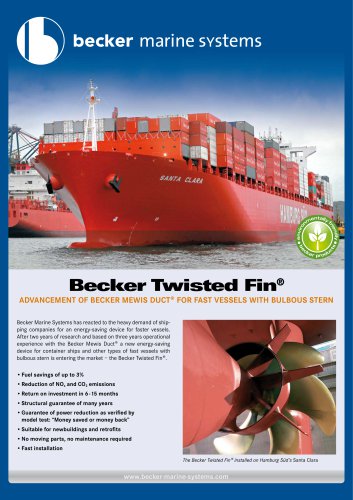
Catalog excerpts

KBIMS – Kongsberg Becker Intelligent Monitoring System A solution for rudder force detection to support Dynamic Positioning (DP) operation Ship operators using conventional rudder-propeller arrangements in their vessels are always looking for ways to improve DP performance. This is because there are many advantages to using a main propeller and rudder instead of azimuth thrusters. These include there being no limitation in installed power, good response times and high course-keeping performance. For this reason, in early 2010 Becker Marine Systems (BMS) and Kongsberg Maritime (KM) began a joint development project utilising their respective expertise in high performance rudder systems and DP systems to enhance DP capabilities. High performance in manoeuvring and DP Due to nature’s influences of wind, waves and current the operational conditions of a rudder can vary significantly at any one time. Even in steady conditions the correlation between the angle of attack and lift is non-linear. For BMS and KM the challenge was to find a more direct indicator of manoeuvring performance than the vessel’s motion reaction detected by GPS or gyros. It turned out that the closest value to describe performance was the rudder force itself. Therefore, BMS and KM began developing systems for force detection on rudders (BIMS), as well as developing components to process this data, for implementation in DP systems for improving adjustments in operations (RUF). The result was that all components and features were integrated into one system, called KBIMS, which is available for use in conjunction with KM’s DP systems and full spade rudders from BMS. The KBIMS configuration for a twin screw vessel
Open the catalog to page 1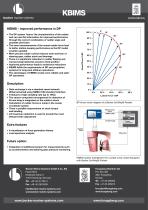
KBIMS KBIMS – improved performance in DP • The DP system ‘learns’ the characteristics of the rudder and can use this information for improved performance through the correct combination of rudder angle and propeller pitch/rpm • The exact measurements of the actual rudder force lead to better station-keeping performance as the DP model is better updated • More precise rudder control reduces wear-and-tear of steering gear, rudder stock and bearings • There is a significant reduction in rudder flipping and manoeuvring hysteresis around a fixed position • Improved performance leads to emissions...
Open the catalog to page 2All Becker Marine Systems catalogs and brochures
-
Energy-Saving Devices
2 Pages
-
LNG Hybrid Concepts
2 Pages
-
Becker Marine Products
19 Pages
-
Shuttle tankers
2 Pages
-
Becker Flap Rudder
2 Pages
-
Becker Bulb Rudders
4 Pages
-
Becker Cross Over Rudder
2 Pages
-
Becker Mewis Duct Brochure
17 Pages
-
Becker Nozzle
2 Pages
-
Becker Twisted Fin®
4 Pages
Archived catalogs
-
propeller nozzle for ships
4 Pages
-
flap rudder for ships
41 Pages



